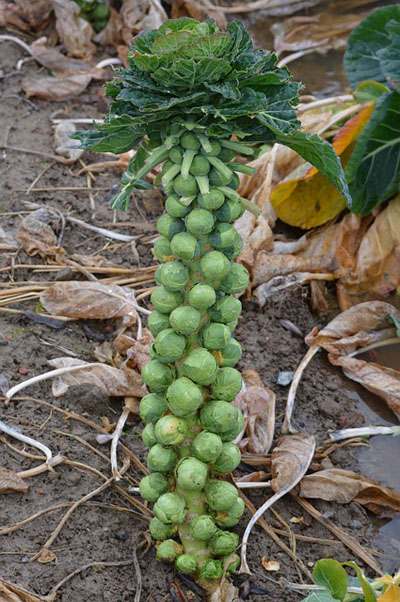What to do in Your Tucson-Area Yard in August
Happy August! Below are some ideas for things to work on in your yard and garden.
Did you know that this month is an ideal time to plant palm trees? They are not native to the Tucson area, but many do well here. One of the most popular options (I have them in my own backyard!) is the Mediterranean fan palm. If you check out our tour of the University of Arizona Arboretum, you'll see examples of other palm trees that can grow in the Tucson area.

Start Planning for Fall
If you plan on adding a shade tree to your yard, September or October are ideal planting times. Now is the time to think through what tree(s) would work best on your property, where to plant them, and how to irrigate them.
It's also better to add landscape plants in the fall, when temperatures have moderated but the soil is still warm. Check our Tucson Plants page for ideas on what to plant (and what to avoid!). Local garden centers and nurseries will also be able to help you with suggestions, and many can also order specific plants for you.
One final thing to plan is your wildflower garden, as seeds can be sown in the fall. Order seeds now so you'll be sure to have what you need when you're ready to sow.
Irrigation and Watering
Though the monsoon rains this July were record-breaking (yay!), you can't count on them every year. In fact, 2020 was the second driest July on record for Tucson. Regardless of how much rain the monsoons bring, they don't necessarily replace your irrigation schedule.
Adjust irrigation frequency as appropriate based on rainfall this month. Use a rain gauge to see how much rainfall your property received – a good rule of thumb is to turn off or delay your watering system if you measure .5 inches of rain or more.
Once this month, water plants twice as deep as normal. This will help to leech out the salts from the soil (salt builds up over time and can damage your plants).
Lawns should be watered in the morning to prevent fungus growth, 4-8 AM is optimal.
Keep harvesting rainwater this month. With the monsoon rains, you can collect a LOT of water in a short period of time! If you don't have a cistern or large water tank, just use what you have - wooden barrels, plastic trashcans or even a kid's swimming pool can work. Just remember to cover the containers to prevent mosquitoes (or drop in Mosquito Dunks).
Rainwater Harvesting Resources
- You can use this detailed document from the University of Arizona Cooperative Extension as a guide.
- Water management resources on this website
Wait to Prune Trees
Now is not the ideal time to prune trees. Prune only for issues such as dead or dying branches, branches in your way, damage caused by monsoon storms, etc.
Sow or Transplant Herbs or Vegetables
Monsoon planting is a great way to take advantage of higher humidity, some lower temperatures, and of course more rainfall. Most monsoon plantings can be harvested in September or October. If it doesn't look like there will be much of a monsoon season this year, you can instead ready your garden and soil for the fall planting season.
On or around August 1
Sow these from seed:
- Corn
- Beans (such as bush beans, pole beans)
- Tomatillos
- Carrots
- Green onions
- Pumpkins
- Tomatoes
- Winter squash
- Black-eyed peas
Transplant these as seedlings:
- Eggplant
- Basil
- Mint
- Oregano
- Rosemary
- Sage
- Thyme
On or around August 15
Sow these from seed:
- Summer squash
- Brussels sprouts
- Turnip
- Bok choy
- Broccoli
- Lettuce
- Kohlrabi
- Cabbage
- Cauliflower
- Celery
- Collard greens
- Kale
- Cucumber
- Chard
Transplant these as seedlings:
- Tomato
- Pepper
- Eggplant
- Basil
- Mint
- Oregano
- Rosemary
- Sage
- Thyme
Pests to Check For in August
Because of the increase of rain and moisture, weeds will continue to pop up around your yard. You can use a pre-emergent herbicide to prevent some of the weeds (corn gluten is an organic option), or just wait until after the ground is soft from recent rainfall and pull them out.
Dust storms can bring spider mites to yards this month. Look for yellowing leaves and spiderweb-like threads. The best defense is to spray the spider mites (and their webs) off leaves with a garden hose once a week.
If you have fruit trees or vines, you may find the ripe fruit covered with green fig beetles (also known as sour fruit beetles). These round, shiny green beetles are 1 inch or longer and LOVE eating ripe fruit. The adult beetles can be challenging to manage (you probably don't want to be spraying pesticides on your ripe fruit!) so prevention is usually the best strategy. The University of Arizona has some management recommendations here.
Another August garden pest that's very difficult to control is the tiny but damaging whitefly. Populations often grow quickly this month and attack everything from trees to vegetables. Insecticides are fairly ineffective but biological and mechanical controls can provide some relief.
Other Things To Do

- Gather sunflower seeds from sunflowers.
- Add potting soil to containers as it gradually decreases and loses nutrients over time.
- Remove vegetables that are past their growing period to prepare for fall gardening.
We hope these tips help you enjoy your Tucson-area yard and garden this month! Have fun!